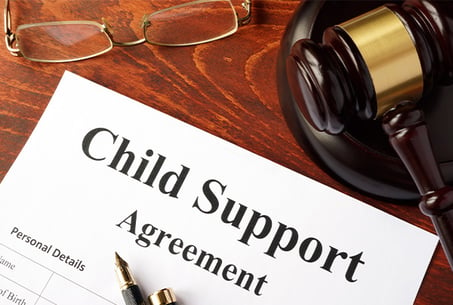What’s Your State’s Grade on Child Support and Shared Parenting?
3 min read
Date Published: 04/05/2022
Last Updated: 04/05/2022
National Fatherhood Initiative Blog / Latest Articles
3 min read

Before you read the rest of this post, indulge me by rating your knowledge on a scale of 1-5 (1 = no knowledge and 5 = complete knowledge) in response to the following two questions:
Regardless of how you rated yourself, I’ll bet you don’t know nearly as much about those two issues as the folks at the National Parents Organization (NPO). NPO’s mission is to:
“Improve the lives of children and strengthen society by protecting every child’s right to the love and care of both parents after separation or divorce.”
I recently learned about NPO and its comprehensive report on the impact on father involvement of states’ child support guidelines on shared parenting.
Before I get to the report, however, here’s a quick primer on shared parenting.
Start with What It’s Not
It’s difficult to nail down a consensus definition or use of the term “shared parenting.”
Why?
Because some people use the term “equal parenting” instead. Other people combine “shared” and “equal” and use the term “equal shared parenting.” While still others use the more common term “co-parenting,” with or without the hyphen.
Confusing? Yep.
So, at the risk of alienating anyone who would have a bone to pick with me about what I’m about to offer, here’s my best shot at understanding what shared parenting is in part by understanding what it’s not.
Shared parenting is when parents share equally in decision-making around their children. It’s not the same as joint custody. Although the two terms are certainly related, joint custody is a legal arrangement in which parents make legal decisions around their children. Shared parenting refers to all decisions. It can involve joint custody but can exist in the absence of it, such as when a divorcing or never-married couple agrees to share in decision making legal and otherwise and with or without the help of a third party (e.g. a mediator).
Now that we have that primer out of the way—and in the hope that I haven’t further confused you—I’ll turn to the main point of this post, the NPO report.
Your State’s Grade
In the 2022 Child Support and Shared Parenting Report Card, NPO gives each state a grade (A-F) on how its child support guidelines affect shared parenting. Specifically, the report card:
“Evaluates the states on their parenting time adjustment (PTA), sometimes called a ‘parenting time offset’ or a ‘residential time credit’. This is a mechanism by which child support guidelines allocate resources for rearing children between the children’s two homes.”
What grade do you think your state received? Take a wild guess. (Sorry. I know I’ve asked you do a bit of deep thinking to get through this post.)
If you guessed an “A,” then you live in one of these four states:
That’s right. Only four states are at the head of the class.
The grades for the other 46 states flush out this way:
Nearly half the class is flunking and two-thirds is in need of remedial help!
I don’t have the space here to provide the details of NPO’s research methodology. You have to read the report. Here’s the summary of the overall results, however, straight from the NPO website. It provides a snapshot of how poorly our nation supports shared parenting via parenting time adjustment (PTA):
“Nine states have no PTA at all. This means that a payer parent with whom the children reside half the time, or even more, will presumptively pay the same amount of child support to the other parent as one with whom the children spend no time at all. And many states that have a PTA impose unreasonable thresholds on its application—some don’t apply until the payer parent has the children in their care 50% of the time. These thresholds create cliff effects that engender parental conflict by treating insignificant differences in parenting time very differently for calculating child support. Some state guidelines with low thresholds create cliff effects elsewhere in their calculations, again encouraging parental conflict instead of cooperation.”
If you live in one of the 46 states that didn’t receive an A, you can use this interactive map to quickly ascertain your state’s grade. You can also download the main report and technical supplement.
How familiar are you with shared parenting?
Do you know whether legislation that supports shared parenting exists or has been proposed in your state? Check out this NPO report and this interactive map on the status of legislation in all 50 states.
Date Published: 04/05/2022
Last Updated: 04/05/2022
Download the ebook to learn how to create fatherhood initiatives that engage every sector of community life.

Train Your Staff
Fatherhood Programs
Fatherhood Data
© 2025 National Fatherhood Initiative®. All rights reserved.